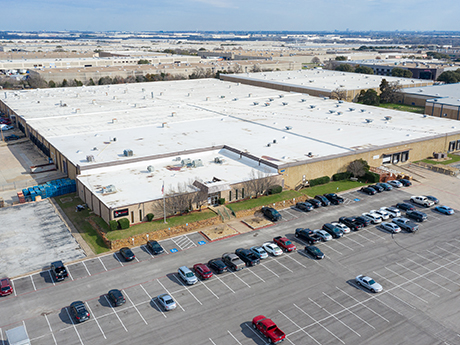By Ron Gilbreath, managing director of asset & property management, Westmount Realty Capital
It’s no trade secret that global lockdowns during the pandemic had a significant and lasting impact on supply chains worldwide. EY’s 2023 poll revealed that 72 percent of senior-level supply chain executives experienced negative impacts on their businesses due to the pandemic, resulting in the emergence of a concentrated focus on supply chain visibility.
The crucial point to acknowledge during this continued disruption is that these impacts are closely tied to the just-in-time (JIT) inventory management system. As a result of these challenges, businesses are actively reassessing their distribution network strategies, leading to a surge in demand for industrial warehouse space. With the necessity to maintain greater inventory levels, companies are re-evaluating their warehouse space requirements and distribution setups to mitigate the risk of future supply shortages.

The lockdowns disrupted two essential elements of JIT strategy: steady production and supplier reliability. Suppliers forced to comply with government lockdowns incurred major disruptions across various business lines due to the challenge of maintaining consistent production. This is a key component of JIT delivery that relies on having materials physically present during the production process. When these materials are unavailable, production delays occur. The inability to maintain forecasted production levels also prompted the need for additional inventory across the business-to-business and business-to-consumer supply chain.
Supply chain disruptions have driven industry leaders to reconsider JIT strategy and embrace new principles focused on a just-in-case (JIC) environment. As suppliers struggled to comply with government-imposed lockdown measures, significant disruptions reverberated across multiple business sectors. Maintaining steady production — a vital element of JIT delivery — became a challenge since this initiative relies on having materials physically available throughout the production process. When these materials became unavailable, production delays ensued.
In line with this strategic shift, recent reports from Reshoring Initiative and Deloitte highlight the growing interest in relocating manufacturing operations closer to end-consumers. The Reshoring Initiative’s latest data report unveiled a remarkable 53 percent increase in U.S.-based jobs related to reshoring and foreign direct investment in 2022 compared to the previous year.
Similarly, Deloitte’s survey of transportation and manufacturing executives revealed that a significant amount of respondents — 68 percent, to be exact — were considering shifting their manufacturing operations to the United States, with 39 percent of them citing Texas as their preferred location. These findings further support the notion that businesses are actively seeking to mitigate disruption risks and cost inflation by re-evaluating their manufacturing strategies and exploring new geographical opportunities.
Over the last decade, many corporations have chosen and continue to choose to relocate to Texas due to its business-friendly environment, which includes various tax incentives tailored for industrial developers and manufacturing firms. The state allows tax abatements and exemptions at the municipal level, providing further allure to businesses. Additionally, Texas offers tax-exempt industrial revenue bonds that facilitate financing for eligible industrial or manufacturing development.
Texas, especially the Dallas-Fort Worth (DFW) metroplex, stands out as a leading logistics hub due to its central U.S. location and excellent transportation infrastructure. Industrial job growth in the DFW metroplex has consistently outperformed the national average, with a growth rate of 11.1 percent compared to the national average of 3.5 percent, according to data from CoStar Group. And according to a June analysis by CoStar, DFW was at the forefront of the nation, with 66 million square feet of industrial space currently under development.
This increasing demand, paired with slower forecasted new construction due to tightened financing standards in a rising interest rate environment, should continue to drive rental rate growth. However, despite a 50 percent growth in DFW industrial rents over the past five years, the average rental rate in the market remains affordable at $8.46 per square foot — well below similar logistical hubs such as Los Angeles ($21.18 per square foot), New Jersey ($13.57 per square foot) and Miami at ($13.32 per square foot). These figures are courtesy of Newmark’s 2023 National Industrial Conditions & Trends Report.
While rising interest rates are impacting the historically low cap rates observed between 2021 and 2022, the strong tenant demand and the possibility of declining interest rates within the next 12 months are expected to attract more capital to the industrial sector. This increased investor interest should enhance liquidity and potentially decrease cap rates.
Despite economic challenges faced by other markets, the Texas industrial real estate market has shown resilience and continues to perform well. The DFW market in particular is expected to offer attractive investment opportunities in desirable asset classes for the foreseeable future, meeting the needs of inventory management while satisfying consumers’ delivery expectations.


